Note: measurements taken in the anechoic chamber at Canada's National Research Council can be found through this link.
 I traveled 4298 miles to discover Aurelia speakers, and in that first encounter, at the 2018 Warsaw Audio Video Show, I didn’t realize what I was hearing. Even at the best of times, the listening conditions at audio shows are terrible, and this wasn’t the best of times: the multitudes of attendees made it almost impossible to hear what was going on, and we had to keep to an insane go-go-go pace to cover the show for SoundStage! Global.
I traveled 4298 miles to discover Aurelia speakers, and in that first encounter, at the 2018 Warsaw Audio Video Show, I didn’t realize what I was hearing. Even at the best of times, the listening conditions at audio shows are terrible, and this wasn’t the best of times: the multitudes of attendees made it almost impossible to hear what was going on, and we had to keep to an insane go-go-go pace to cover the show for SoundStage! Global.
So when, at the insistence of founder Antti Louhivaara, who designs all Aurelia loudspeakers, I finally sat down in their room to hear his XO Graphica XL, I wasn’t in a mindset to pay close attention. Yeah yeah, big speakers in a small room. What’s next?

On the last day of the show, Louhivaara mentioned to us that Aurelia’s Canadian distributor had a pair of the smaller of their two floorstanding models, the XO Cerica XL, that they were willing to send me for use as review samples. SoundStage! founder and publisher Doug Schneider then told me this: “I reviewed Aurelia’s stand-mount XO Cerica speaker back in 2013. We almost made it a Product of the Year, but it got beaten out by the original Magico S5. You should take them up on that review offer.”
I did.
There are three of them
At first glance, the XO Cerica XL ($11,000/pair, all prices USD) is a slim, elegantly proportioned, two-way floorstander a good bit deeper than it is wide at 44.5″H x 6.9″W x 11″D and 52.9 pounds. My review samples were extremely well finished in a black piano lacquer as good as any I’ve encountered (white lacquer is available). And while the Cerica XLs are substantial, their light-sucking black lacquer and narrow profile made them nicely unobtrusive in my room.
Each Cerica XL sits flat on a plinth painted the same color of piano lacquer. Grilles are not provided, so be sure you’re OK with a total of ten drive-units staring at you.
Two-way speakers with five drivers each? Yup. The Cerica XL has three freaking tweeters. You don’t see that every day. Its three 1ʺ titanium-dome tweeters are mounted very close together, all sharing a single large, partitioned waveguide. Louhivaara was formerly chief designer at another Finnish company, Amphion, whose speaker designs also featured tweeter waveguides. In the case of the Cerica XL, the waveguide serves several purposes. First, because it acts somewhat as an amplifying horn, it increases the tweeter’s efficiency. Second, with three waveguided tweeters, all operating at a higher efficiency than otherwise, Louhivaara was able to lower the speaker’s crossover frequency to 1500Hz, to give the two 6.5ʺ midrange-bass drivers a fairly easy go of it.
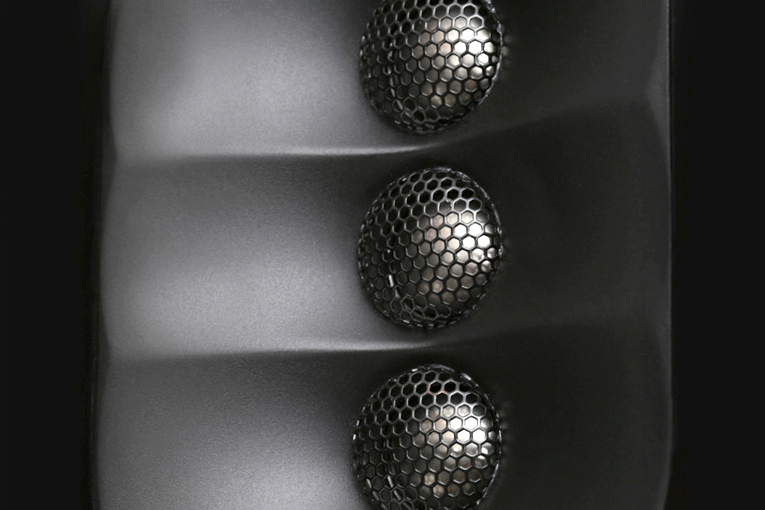
Third and most important, the Cerica XL’s carefully designed triple waveguide—Louhivaara describes it as a Cylinder Source Radiator (CSR)—allows the three tweeters to radiate as a line source, in a manner similar to that of a ribbon tweeter. According to Louhivaara, the CSR system “forms cylinder waves from 1.5kHz upwards. This is the system crossover frequency as well. Low crossover point is necessary to avoid interference problems at mid-frequencies. And when talking about line-sources it is necessary that both mid/bass-systems and tweeter-system are generating uniform cylinder waves to obtain stable and uniform acoustical behavior in the complete acoustic system.”
So the CSR waveguide helps control phase in the crossover region, and helps mesh the tweeters’ outputs with those of the midrange-bass drivers. This configuration enables the entire speaker to operate as a line source.
Aurelia labels those two 6.5″ drivers DDC Isomatrix Eaglewing. Their Dynamic Damping Control (DDC) technology is intended to ensure that the driver’s voice-coil remains in its gap at all times, to present the powering amplifier with a consistent impedance.
On the rear panel are one pair of high-quality binding posts, a large port, and a Presence switch with Hi and Lo positions, to provide a small amount of high-frequency boost. The Low position worked best in my room.
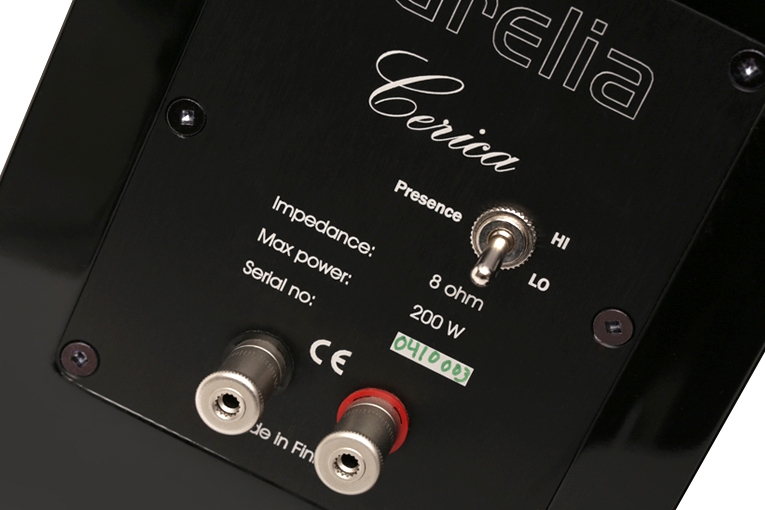
No, ’tis not so deep as a well . . .
After 20 years in this reviewing gig, nothing shocks me. When I first hook up a component, the best I usually hope for is not to be immediately disappointed. After all, I need to listen for a good long spell to any new arrival to my listening room, and if I really don’t like what I first hear, it means I’m facing a stretch of listening drudgery. But if I like a new component at first hearing, then hey! All is good.
The Aurelia XO Cerica XL had me all turned around.
I hooked up the review samples to my Bryston 4B3 amplifier with Audience Au24 SX speaker cables and sat down to listen, though to what, exactly, I forget—I was immediately and thoroughly gobsmacked, too startled to take notes. Emanating from these two slim, graceful columns was the most holographic soundstage I’d ever heard. I reread Doug’s 2013 review of Aurelia’s XO Cerica and noted that he, too, used holographic to describe the soundstaging of those minimonitors.
The word is appropriate. An immersive bubble of sound was projected outward from the plane of the speakers, and within this bubble was an entire world of musical information.
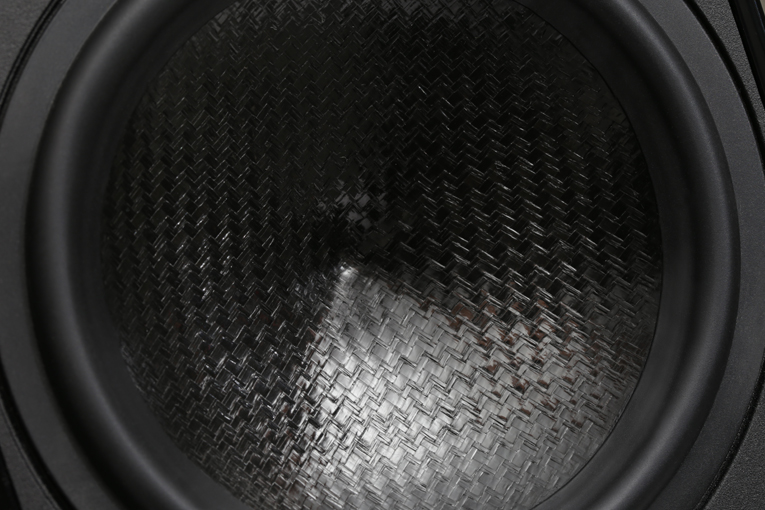
There are two ways of looking at the Aurelias’ bubble of sound. First, it was ostensibly in the form of a bubble coming out about halfway from the plane described by the speakers’ baffles to the listening position. Contained within this boundary was a full suite of musical information that extended way behind that plane. This is devious trickery that I don’t profess to understand, but I’ll do my best to describe it.
I recently ponied up for four LPs by John Zorn, ordered direct from the website of his own record label, Tzadik—great-sounding pressings of challenging, angular music. Zorn’s band Masada’s Sanhedrin: Unreleased Studio Recordings 1994-1997 (LP, Tzadik TZ 6007) is fast jazz, bebop almost, mixed with rich, minor-key klezmer. This is fun, juicy, jumpy music, and the Cerica XLs made me feel as if I were sitting right in front of the four players: Zorn on alto sax, Dave Douglas on trumpet, Greg Cohen on bass, and Joey Baron on drums. That’s the goal of high-end audio, and there I was, experiencing it. Right at the center, Zorn’s lyrical sax rose and fell in intensity. Through the Cerica XLs it sounded round and brassy, warm and reedy—I could feel the spit collecting under the keypads. The aural image of Zorn blowing his axe was so real it took my breath away.
That image was in the round. The sound of Zorn’s sax wasn’t just a disembodied point in space. Beyond depth of image placement, the Cerica XLs provided the depth, height, and width of the image itself. I could feel the bell of the sax, sense its placement in space, the actual size of that bell.
I’d never heard anything like the way the Cerica XLs imaged—not in my listening room, not at an audio show. In “Meholalot,” also on Sanhedrin, there’s a short drum solo. Baron isn’t showing off—his playing is spare—but I could sense the other musicians pulling back to the sides, and suddenly the entire front of my room was filled with crisp toms, open and brassy cymbals, and, to the right, Baron keeping time on a tappity-tap hi-hat.
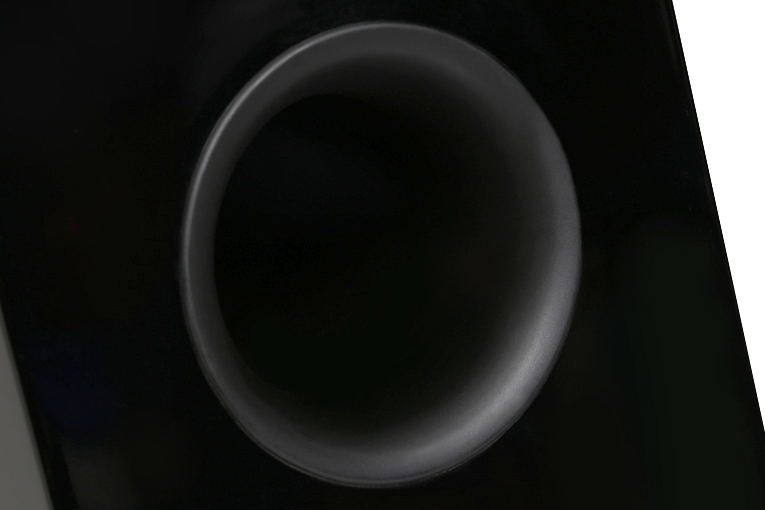
Plenty of speakers out there can image and soundstage really well, and my room has hosted a number of them. But the Cerica XLs’ bubbles of sound were different. At times, they could sound scarily deep and involving.
The Cerica XL’s sound had immediacy. Although its HF and LF drivers hand off to each other at the quite-low frequency of 1500Hz, remember that there are three of those tweeters, which means that each one has a fairly easy go of it. The combined wavelaunch of that tweeter trio covers a big part of the audioband—everything from 1500Hz to the top of the speaker’s specified frequency response of 32Hz-20kHz. Perhaps that’s one reason these speakers sounded so dynamic. The Cerica XL had an electrostatic clarity, but with a crisper, punchier sound than any electrostat I’ve heard. And the highs, despite being dynamic, precise, and accurate, were exceptionally easy to listen to at high volume. The sound didn’t harden at high SPLs, didn’t get edgy when I really wicked up the volume. Instead, the highs remained neither silky nor incisive, but correct. The three tweeters fired off appropriate, effortless, edge-free, nuanced sound in a way that utterly served the music.
The Cerica XL is most definitely a speaker to sit down and listen to in a dedicated listening room. Like mine. Like I like. When I stood up, all that marvelous imaging and soundstaging collapsed. The highs, too, mostly vanished. It’s that line-source thing—ribbon speakers behave the same way. These are not the speakers for a multipurpose room you’d be standing up or moving around in while playing music.
The Cerica XL’s midrange was articulate and detailed, but also had the tweeters’ relaxed intimacy, combined with heaps of imaging in a very complementary way. Listening to Kenny Burrell’s guitar in “Street Runner with Child,” from Sonny Rollins’s Alfie: Original Music from the Score (LP, Impulse! IMP-224), I could feel—heck, I could almost see—the transition from the muted background strings of Oliver Nelson’s arrangement, right into Kenny Burrell’s wide-open, tubey-sounding, amplified guitar solo in the next track, “Little Malcolm Loves His Dad.” Most times I wouldn’t fuss over such a detail, but listening through the Cerica XLs, I found myself wanting to understand more about the music. The Aurelias’ quick, snappy, dynamic sound brought that guitar right into my room.
The Cerica XL’s midrange was forward in that it wasn’t recessed, sucked out, or otherwise too low in level. But it wasn’t tonally forward. Instead, it was forward in its projection of aural images—they came farther out into the room, rather than sitting at or behind the plane described by the speakers’ baffles. Again, I know that this is a contradiction—despite pushing realistic images out in front of the speaker plane, those images still had astonishing depth within themselves.
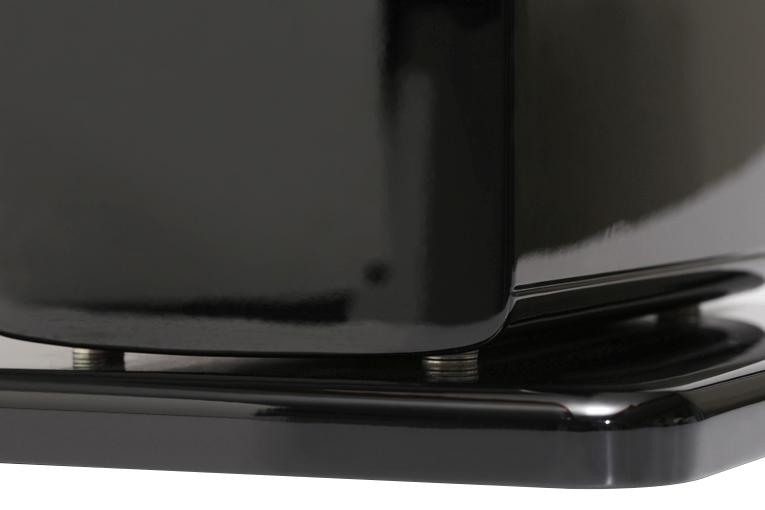
When I’m listening to my analog system, I generally flit from LP to LP. I’ll listen to all of an album side, then go on to the next record—there’s just so much music, and I’m always keen to cue up something new. With the Cerica XLs, the Little Fwend tonearm lift would raise the arm of my VPI Prime Signature turntable at the end of a side, but instead of reaching for a different record, more often than not I’d flip the disc over and play the other side, or just listen to the same side again—and then, sometimes, a third time. I review by instinct rather than follow any sort of methodology, so the way I listen often affects my view of a component. I found that the Cerica XLs presented me with so much musical information that I couldn’t absorb it all in a single playing of an album side.
With two 6.5ʺ midrange-woofers in each floorstanding bass-reflex cabinet, you’d expect a pair of Cerica XLs to produce decent bass, and they did. The good part about the Cerica XL’s bass was that here at last is one aspect of the speaker’s sound that I can describe in conventional audiophile terms. Aurelia specifies that the Cerica XL goes down to 32Hz. That spec seems accurate—in “Squonk,” from Genesis’s A Trick of the Tail (LP, Atco SD36-129), I got a good sense of the low-frequency synth.
But far more important than the quantity of a speaker’s bass low in the 30-40Hz decade is the quality of that bass, and the Cerica XL’s bass was rich, deep, and very slightly warm. I guess it really needs to lean just a tiny bit toward the rich side—there’s so much going on in this speaker’s midrange and treble that a dry, crisp bass would get lost and be unable to keep up. Drier bass might make this speaker sound somewhat thin and etched. But the Cerica XL’s full, juicy low end made the entire sound cohere into a solid, corporeal whole.
By describing the Cerica XL’s bass as slightly rich, I’m not sugarcoating a shortcoming. The Aurelias’ bass was plenty tight, and worked perfectly—I wouldn’t change a thing. Just listen to Gord Sinclair’s lithe bass guitar in the title track of The Tragically Hip’s Fully Completely (LP, Geffen 4704109). Sinclair’s bass playing is understandably underrated, given that this band’s sound orbited around the late Gord Downie’s singing. But Sinclair’s got the chops. Through the Cerica XLs I could hear his bass’s warm, rich growl with a touch more roundness than I can from my Focus Audio FP60 BE speakers. Admittedly, the Focus Audios are minimonitors, but they punch far above their weight, and I’ve never found their bass lacking in any way. So yeah—the Cerica XL was just a bit warmer down there.
But in “Xanadu,” from Rush’s A Farewell to Kings (LP, Anthem B0022376-01), Geddy Lee’s Rickenbacker bass had absolutely perfect growl through the Cerica XLs. Lee’s bass playing is up front in the mix, not sitting at the back, like Sinclair’s for the Hip—this is lead bass. The Aurelias put Lee right up front, retaining the tight leading edge of his biting sound with all its juicy harmonic overtones. Listening to this track through my Focuses, I didn’t get that sense of presence, that up-front realism. This makes sense—the harmonics of Lee’s bass extend up into the midrange, where the Cerica XLs’ magic begins.
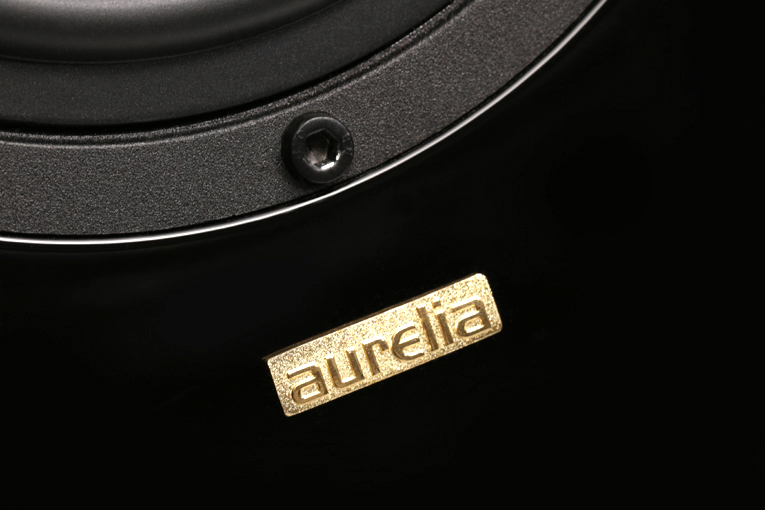
So in my room, the Cerica XLs had the slightest warmth in the upper bass and lower midrange, possibly explained by their rear ports. I could hear this warmth in the lowest register of the acoustic guitars on another John Zorn album, Nove Cantici per Francesco d’Assisi (LP, Tzadik TZ 6008). The compositions are Zorn’s, but I was thrilled to note—after I’d bought the album and heard it a few times—that the guitar trio includes Bill Frisell, one of my all-time favorite guitarists. (The two other players are Julian Lage and Gyan Riley.) The clarity of the guitars, their positioning in space, the dynamics and depth—they were all there, with that monstrous sense of imaging, with that sense of a huge soundstage, along with that slight warmth on the lowest guitar notes, especially in the last track on side 1, “Sister Death.”
That said, no speaker maker will ever go broke by adding a dash of hot sauce to the bass, and I found this slight deviation from neutrality endearing. From the midrange up, the Cerica XLs served up so much musical information that a bit of warmth fit right in.
. . . nor so wide as a church-door
Musical information. Detail. Precision. The number of times these words have appeared in this review might easily lead you to think that I’m talking about a speaker with a bright, etched sound. I am not. Aurelia’s XO Cerica XL was also easy to listen to at loud volume levels. I can’t listen to a bright, etched-sounding speaker at those levels, and I really don’t like bright hi-fi speakers.
I really like the XO Cerica XL. I can’t imagine anyone not liking it. That’s something I rarely say.
. . . Jason Thorpe
jasont@soundstagenetwork.com
Associated Equipment
- Analog sources: VPI Prime Signature turntable; EAT Jo No8, Mobile Fidelity Master Tracker, Roksan Shiraz cartridges
- Digital source: Logitech Squeezebox Touch
- Phono stages: Aqvox Phono 2 CI, Hegel Music Systems V10, iFi Audio iPhono 3 Black Label
- Preamplifier: Sonic Frontiers SFL-2
- Power amplifiers: Bryston 4B3, Simaudio Moon 860A v2
- Integrated amplifier-DAC: Hegel Music Systems H90
- Speakers: Estelon YB, Focus Audio FP60 BE
- Speaker cables: Audience Au24 SX, Nordost Tyr 2
- Interconnects: Audience Au24 SX, Furutech Ag-16, Nordost Tyr 2
- Power cords: Audience FrontRow, Nordost Vishnu
- Power conditioner: Nordost Quantum QBase QB8 Mk.II
- Accessories: Little Fwend tonearm lift, VPI Cyclone record-cleaning machine, Furutech DeStat III
Aurelia XO Cerica XL Loudspeakers
Price: $11,000 USD per pair.
Warranty: Five years parts and labor.
Aurelia Loudspeakers
Antti Louhivaara Design Ltd
Espoo
Finland
Phone: +358 50-5499779
E-mail: antti.louhivaara@gmail.com
Website: www.aurelia.fi/en/






















